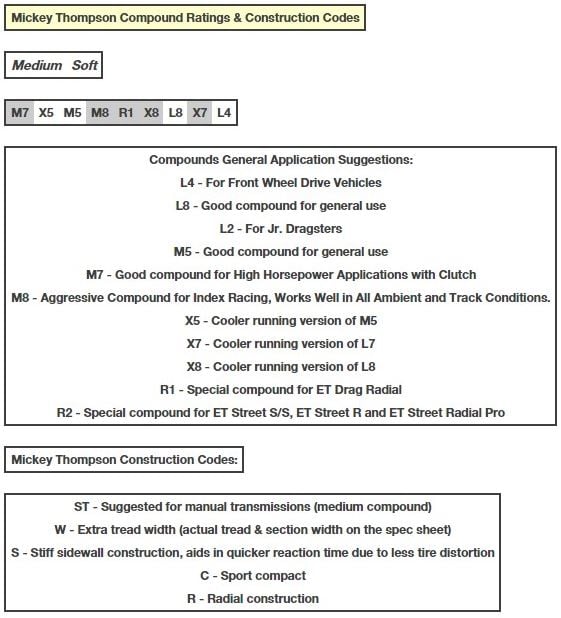How To Read A Tire Size
Being able to read and understand a tire size can be very helpful. On the sidewall of the tire you will find a tire size (for example, “P235/60R15”). We will use this example to decode the sizing. The letter at the beginning denotes the vehicle type. “P” means “passenger tire”. You will also find “LT” for light truck tire and other prefixes. The number following it is the tire width. This is measured across the top of the tire and is in millimeters. So in the example, the tire is 235 millimeters wide, across the top. The next number is the aspect ratio. This represents the sidewall height (from the top of the wheel to the top of the tire) as a percentage of the width. In our example, “60” means that 60% of the width (235mm) is the distance from the top of the wheel to the top of the tire. In this case, that would be 141mm. The lower this number is, the skinnier the tire will look from the side. Often referred to as a “low profile” tire, these are typically on late-model vehicles and sport cars. The higher this number is, the thicker the tire will look, typically on trucks which have high profile sidewalls. The next digit is a letter. In this example, “R” for radial tires. The final number is the wheel diameter, in this case, a 15” diameter wheel will fit this tire.
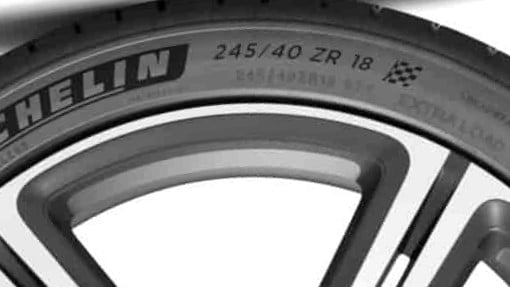
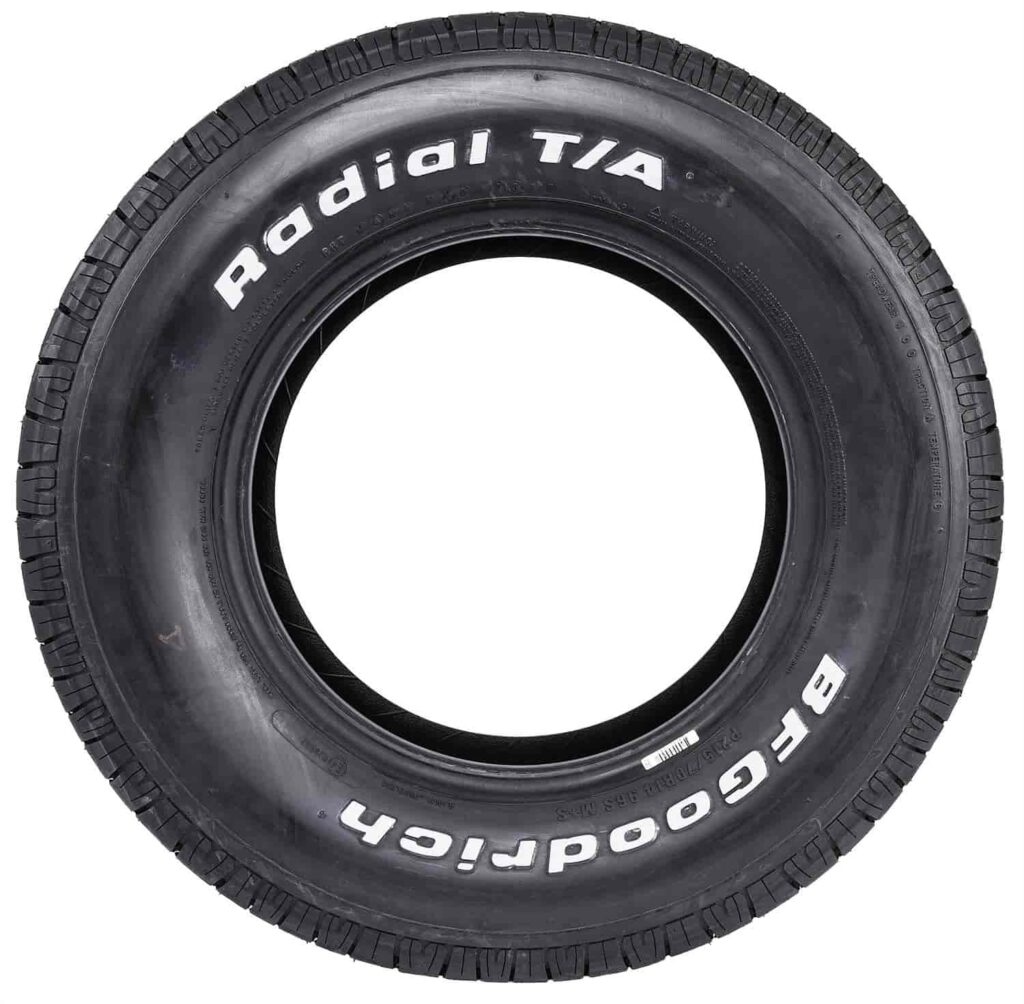
How To Measure Tire Diameter
To measure the diameter of the tire, set it upright on a level flat surface and with a measuring tape, measure from the bottom to the highest point at the top of the tire. This will give you the diameter. If you want to calculate the tire diameter based on the tire size (though doing a web search will be typically quicker), you can do so with the following example. A P235/60R15 tire is 235 millimeters in width, with 60 % of the width being the distance from the top of the wheel to the top of the tire; in this case, 141 millimeters. 141 millimeters converts to 5.55”. This is the sidewall height. If you add this to the wheel diameter, in this case 15” and then the sidewall height for the other end of the tire, 5.55”, you will get your total tire diameter, which would be approximately 26.1” tall.
How To Measure Tire Width
To measure the width of a tire, simply measure across the top of the “footprint” the tire would make. You can also determine the width by the first number in the tire size. For example, with a 235/60R15 tire, the width of the tire would be 235 millimeters or approximately 9.25 inches.
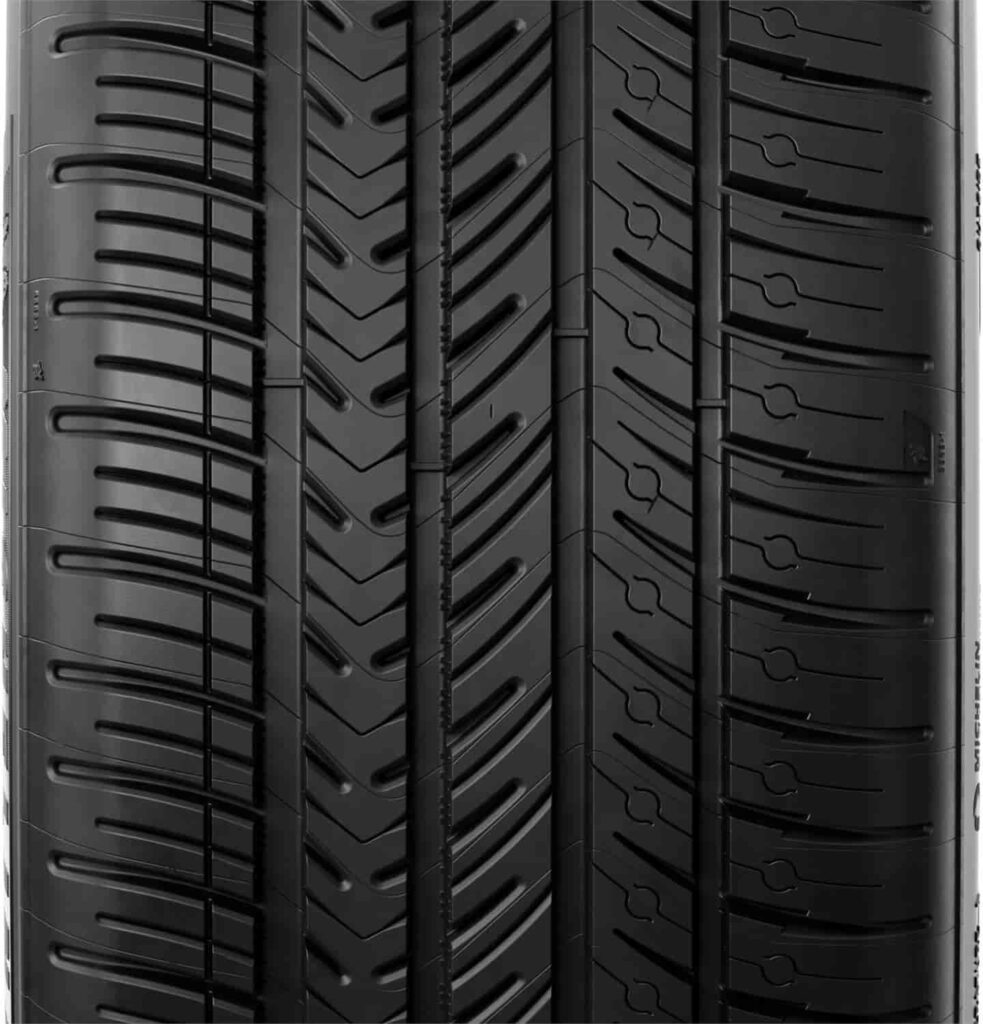
How To Measure Tire Sidewall Height
To measure the sidewall height of a tire, begin your measurement at the top of the wheel and go up to the highest point of the tire. This will tell you your sidewall height. You can also calculate the sidewall height based on the tire size read from the sidewall. For example, P235/60R15 tire size will be 235 millimeters across the top of the tire. The sidewall height is 60% of the tire width, in this case 141 millimeters or 5.55”.
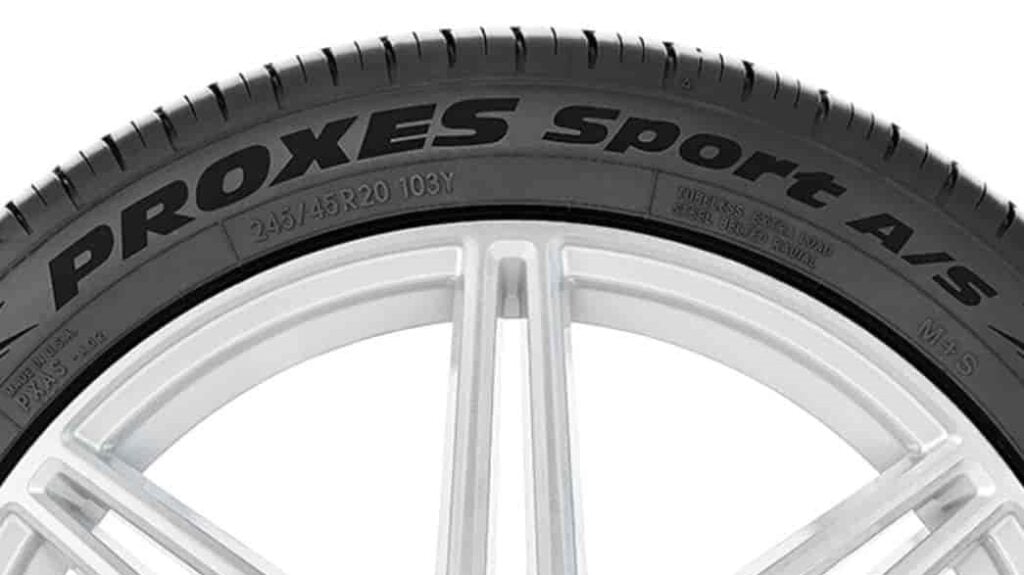

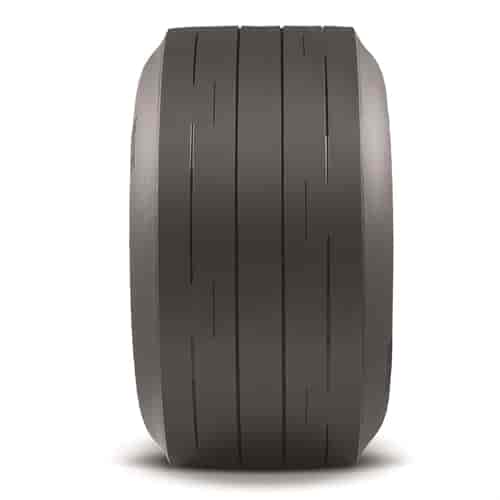
What Is Tire Section Width And How Is It Measured?
Tire section width refers to the tire sidewall distance from where it balloons or bulges out from the furthest point on each side. Tire section width can be very important when clearance is tight in the vehicle's wheel well. This measurement helps to ensure there is plenty of room from turning the steering wheel or due to compression of the front or rear suspension. One way to measure tire section width is by laying a mounted tire with the correct tire pressure on its side. Then measure up to the top of the sidewall using a level and straight edge.
Tire Size Calculator
(Enter the size on the tire as separate measurements. For example, P235/60R15 is entered as 235 for width, 60 for aspect ratio, and 15 for wheel diameter)
Width (in millimeters):
Aspect Ratio (percentage):
Wheel Diameter (in inches):
What Is A Tire Speed Rating And Where Can It Be Found?
A tire speed rating is the maximum speed the tire can safely be used. Beyond the speed rating, the tire will not have the control, stability, or handling it was designed to be used for. The speed rating can be found after the tire size on the sidewall of the tire designated by a letter. Typical passenger car tires will have a speed rating letter from L to Y, ranging in speed from 75 mph to 186 mph. Beyond 186 MPH, the speed rating starts with the letter “Z”. The following is a sample list of speed rating codes and their maximum rated speed:
R = 106 MPH
S = 112 MPH
T = 118 MPH
U = 124 MPH
H = 130 MPH
V = 149 MPH
W = 168 MPH
Y = 186 MPH
Z = Over 186 MPH
What Is The Difference Between A Bias-ply Tire And A Radial Tire?
Since the late 1970s, radial tires have been the most common tire for passenger vehicles. Prior to that, bias ply tires were the standard style. Bias ply tires have individual cords that run in layers that are opposing angles or in “bias”, giving to the name of the tire. In contrast, radial tires have steel cords or “belts” to make the tread surface tougher and more puncture proof than a bias ply tire. Radial tires also tend to keep the vehicle running in a straight line on the road where bias ply tires can tend to pull a vehicle into ruts or uneven surfaces while driving. Radial tires also do better for performance handling during cornering. This is due to the thinner sidewall a radial tire has, allowing it to flex better. Bias ply tires tend to do better with larger vehicles and with bigger weight loads as they have thicker sidewalls. Radial tires also dissipate heat faster and better than bias ply tires, which is desired as heat greatly affects tire life.
Are Softer Or Harder Tire Compounds Better?
Tires are made with different compounds for use in varying applications. Each has its advantages and disadvantages. For applications where long life and mileage is the goal, a harder compound is going to wear less quickly than a softer compound. However, harder tires tend to have less traction than softer tires. For drag racing applications, softer compounds tend to do better as they will grip the surface more than hard tires. This isn’t always the rule as in some applications, harder compound tires actually will do better under certain conditions. Soft compounds also wear faster as they will shed the rubber more quickly.
